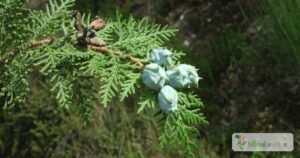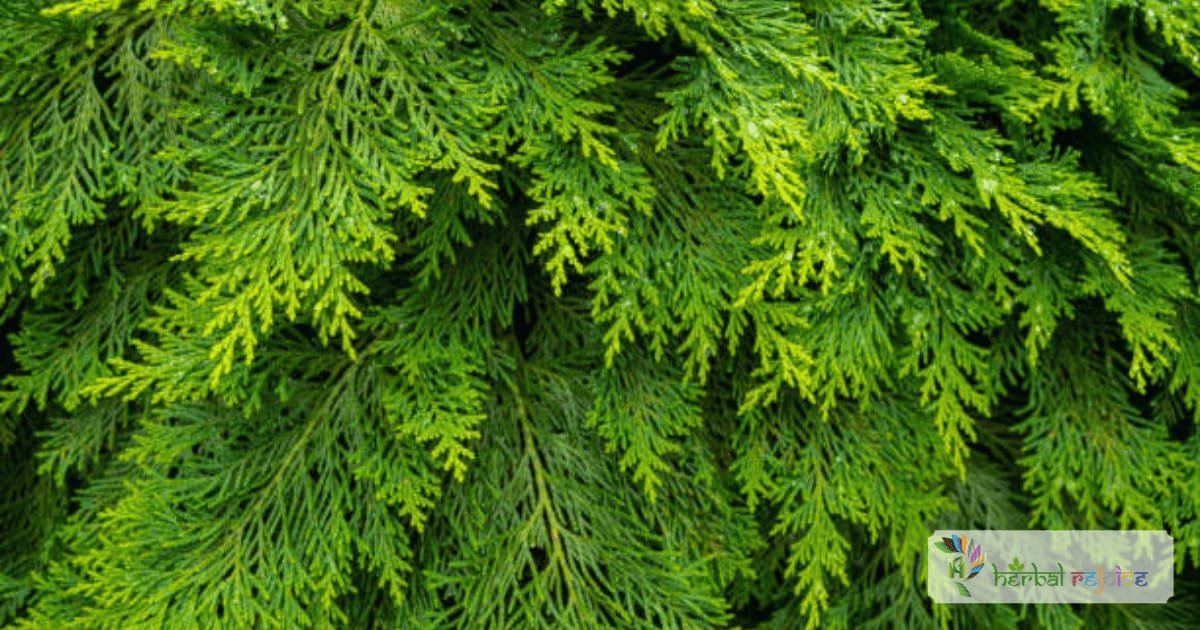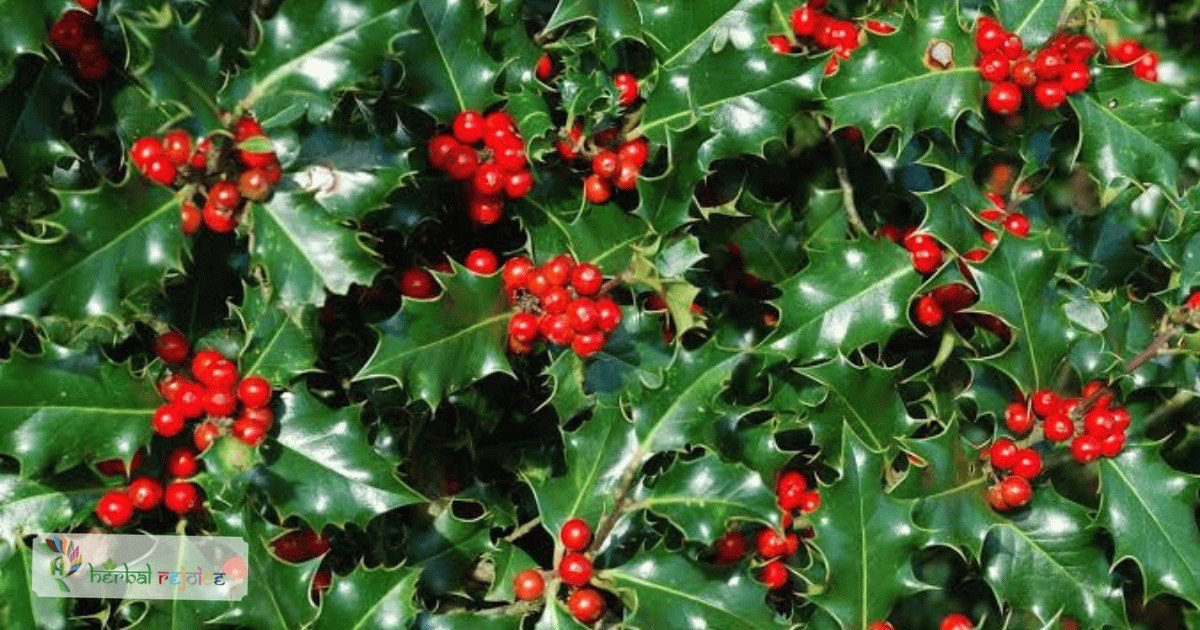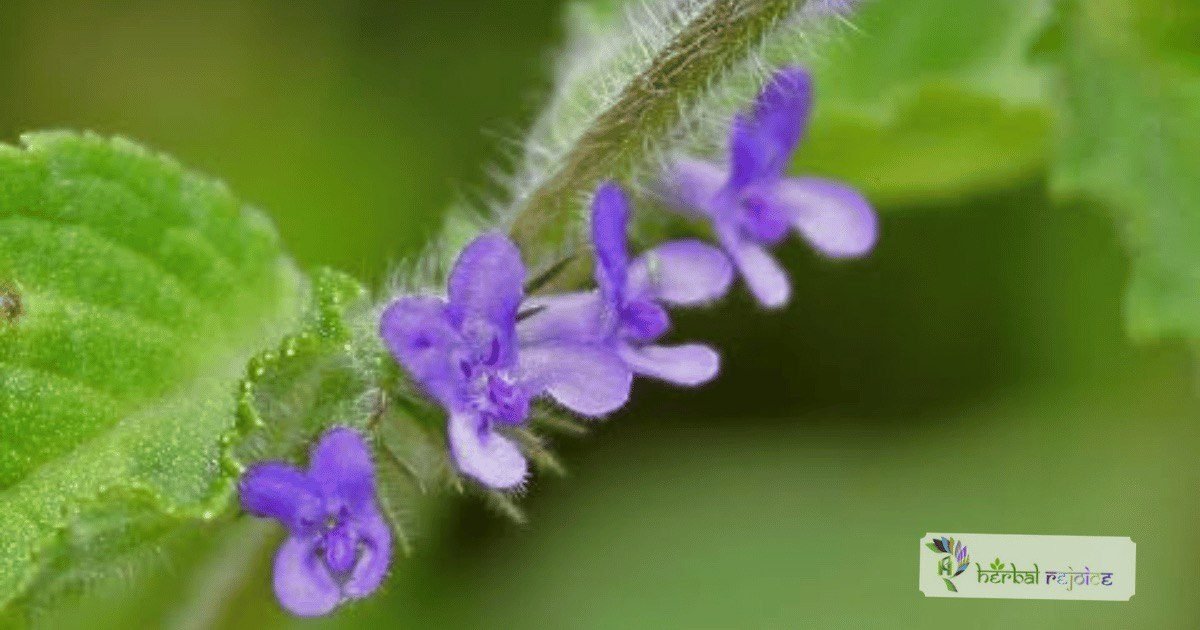Introduction
Oriental Arbor-Vitae (Thuja orientalis Linn.), also known as Morepankhi in folk medicine, is a plant native to China that is now commonly planted in gardens all over India.
It is known for its medicinal properties, particularly in its leaves. Arborvitae possess beneficial effects, including diuretic, insecticidal, and antibacterial properties. It is also used for the treatment of tumors, warts.

Chemical Constituents Of Arbor-Vitae
The leaves of Oriental Arbor-Vitae contain various compounds, including rhodoxanthin, amentoflavone, hinokiflavone, quercetin, myricetin, carotene, xanthophyll, and ascorbic acid. These compounds give the leaves their diuretic, insecticidal, and antipyretic properties.
Additionally, the essential oil extracted from the twigs and berries of the plant contains alpha-thujene, (+)sabinene, (+)-camphene, cedrol, cedrenol, and alpha-and beta-pinenes as its major constituents.
American Arbor-Vitae Vs Oriental Arbor-Vitae
It is worth noting that American Arbor-Vitae and White Cedar have been equated with Thuja occidentalis, which is commonly referred to as Thuja. However, the Oriental Arbor-Vitae discussed here is a different species.
This plant was introduced from North America and is grown as a Christmas tree in the plains of India.
Traditional Uses of Arbor-Vitae
In traditional medicine, the infusion of Oriental Arbor-Vitae leaves is used as a uterine stimulant, emmenagogue, and diuretic. It is also applied externally in the form of a boiled lard for rheumatism.
The bark of the plant is known for its astringent, emmenagogue, and diuretic properties. Moreover, the oil derived from the plant is poisonous, disinfectant, and insecticidal.
Antibacterial Properties of Arbor-Vitae
Furthermore, the seeds and fruits of Oriental Arbor-Vitae have antibacterial properties and can inhibit the growth of Gram-positive microorganisms. The volatile oil extracted from the leaves contains thujone as its major component, along with iso-thujone, borneol, bornyl acetate, l-fenchone, limonene, sabinene, camphor, and l-alpha-thujene. Additionally, the plant contains flavonoids, mucilage, and tannins.
Arbor-Vitae in the Field of Homeopathy
In the field of homeopathy, Thuja is commonly used for tissue degeneration, tumors, warts, and fungoid growths. It can be used both internally and externally to treat these conditions.
Interestingly, the heartwood of Oriental Arbor-Vitae contains a non-toxic antibiotic substance. It also contains sesquiterpene alcohols, including occidentalol, occidol, and alpha-beta-and gamma-eudesmol.
Conclusion
In conclusion, Oriental Arbor-Vitae (Thuja orientalis Linn.) is a medicinal plant with various properties. Its leaves, bark, and essential oil possess beneficial effects, including diuretic, insecticidal, and antibacterial properties.
It is also used in homeopathy for the treatment of tumors, warts, and fungoid growths. With its rich history and therapeutic potential, Oriental Arbor-Vitae is a valuable plant in the world of herbal medicine.
Frequently Asked Questions (FAQ)
What is Oriental Arbor-Vitae (Thuja orientalis Linn.)?
Oriental Arbor-Vitae (Thuja orientalis Linn.) is a plant native to China and commonly found in gardens in India.
What are the medicinal properties of Oriental Arbor-Vitae?
The leaves of Oriental Arbor-Vitae have diuretic, insecticidal, and antipyretic properties.
What compounds are found in the leaves of Oriental Arbor-Vitae?
The leaves contain compounds such as rhodoxanthin, amentoflavone, hinokiflavone, quercetin, myricetin, carotene, xanthophyll, and ascorbic acid.
What are the major constituents of the essential oil extracted from Oriental Arbor-Vitae?
The essential oil contains alpha-thujene, (+)sabinene, (+)-camphene, cedrol, cedrenol, and alpha-and beta-pinenes.
How is Oriental Arbor-Vitae used in traditional medicine?
The infusion of the leaves is used as a uterine stimulant, emmenagogue, and diuretic. It can also be applied externally for rheumatism.
What properties does the bark of Oriental Arbor-Vitae have?
The bark is known for its astringent, emmenagogue, and diuretic properties.
What is the medicinal use of the oil derived from Oriental Arbor-Vitae?
The oil is known for its poisonous, disinfectant, and insecticidal properties.
How do the seeds and fruits of Oriental Arbor-Vitae contribute to its medicinal properties?
The seeds and fruits have antibacterial properties and can inhibit the growth of Gram-positive microorganisms.
What are the major components of the volatile oil extracted from the leaves?
The volatile oil contains thujone, iso-thujone, borneol, bornyl acetate, l-fenchone, limonene, sabinene, camphor, and l-alpha-thujene.
What other compounds are found in Oriental Arbor-Vitae?
The plant also contains flavonoids, mucilage, and tannins.
What is the medicinal use of Oriental Arbor-Vitae in homeopathy?
It is commonly used for tissue degeneration, tumors, warts, and fungoid growths.
Are there any toxic components in Oriental Arbor-Vitae?
The oil derived from the plant is poisonous.
What is the significance of Oriental Arbor-Vitae in traditional Indian medicine?
It is valued for its therapeutic properties and is used in the treatment of various ailments.
How is Oriental Arbor-Vitae referred to in North America?
In North America, Oriental Arbor-Vitae is referred to as Thuja occidentalis.
What is the non-toxic antibiotic substance found in the heartwood of Oriental Arbor-Vitae?
The heartwood contains a non-toxic antibiotic substance.
What sesquiterpene alcohols are found in the heartwood of Oriental Arbor-Vitae?
Occidentalol, occidol, and alpha-beta-and gamma-eudesmol are sesquiterpene alcohols found in the heartwood.
What are the therapeutic potentials of Oriental Arbor-Vitae in herbal medicine?
It has diuretic, insecticidal, and antibacterial properties, making it valuable in herbal medicine.
How has Oriental Arbor-Vitae been utilized in traditional medicine?
Traditional medicine utilizes Oriental Arbor-Vitae for its various properties, including diuretic, insecticidal, and astringent effects.





